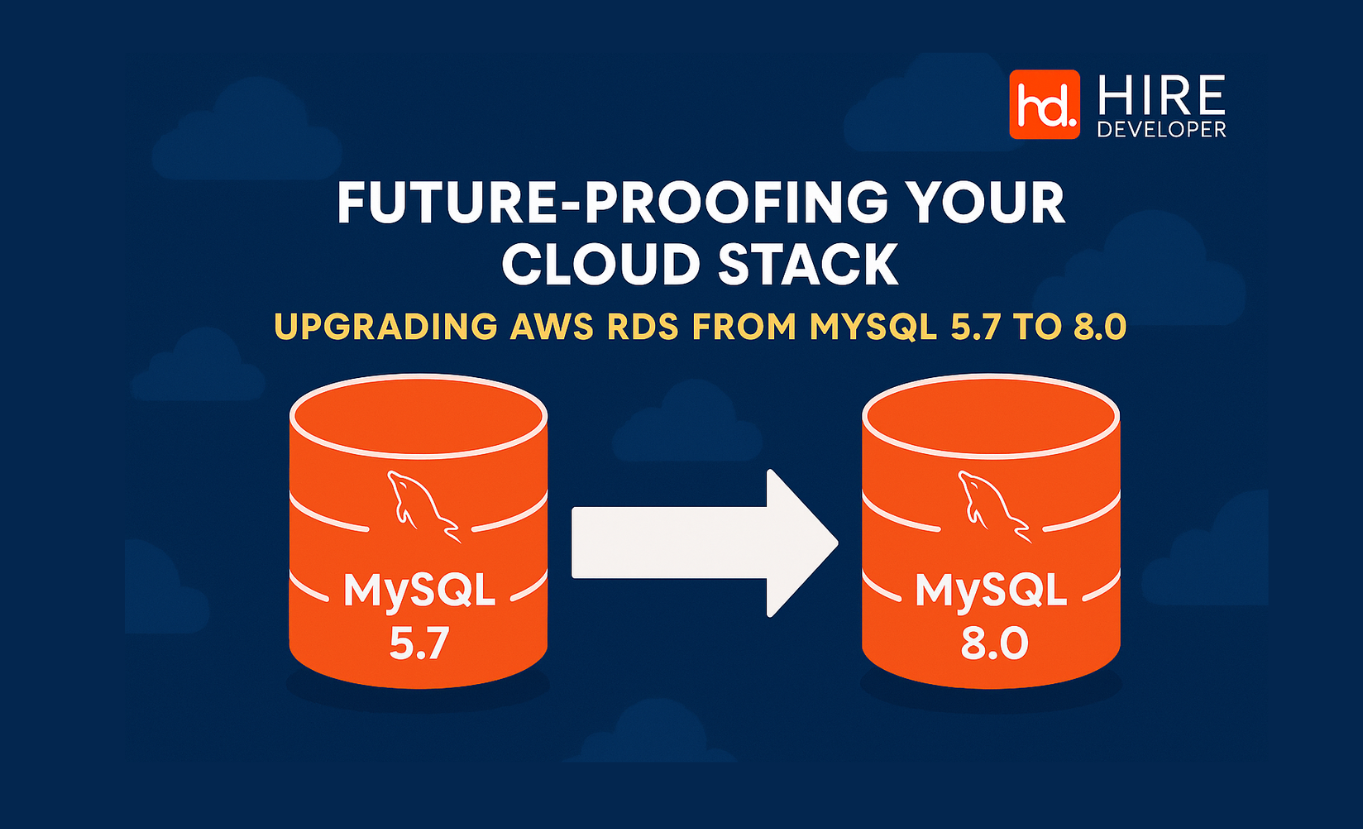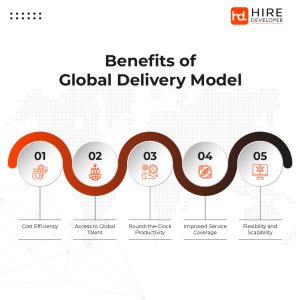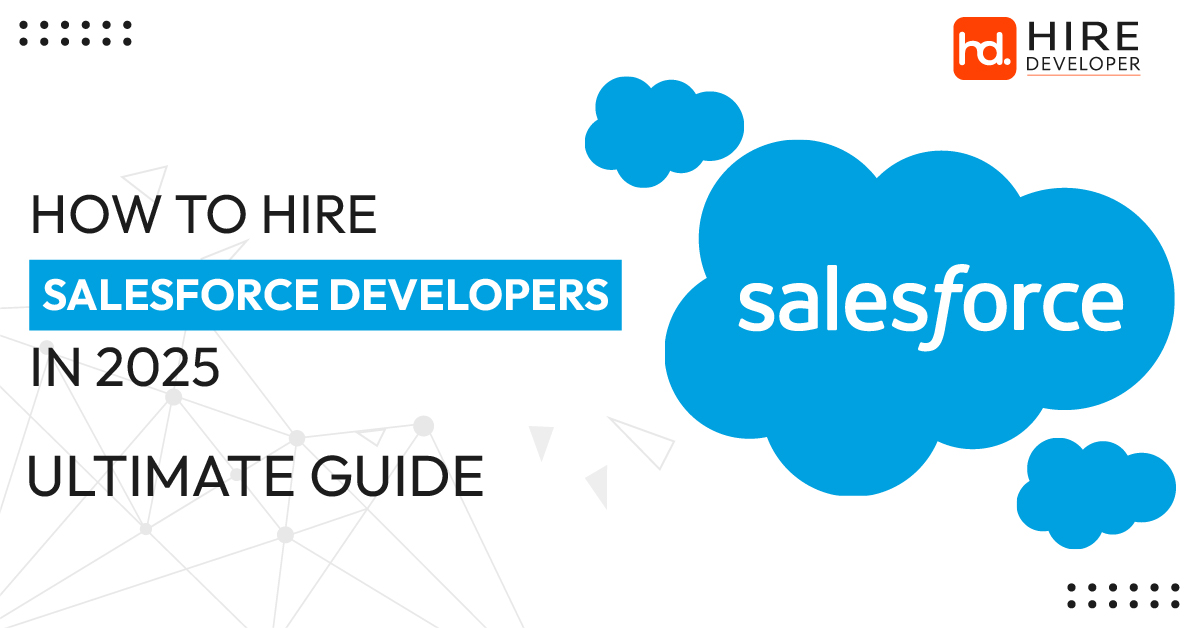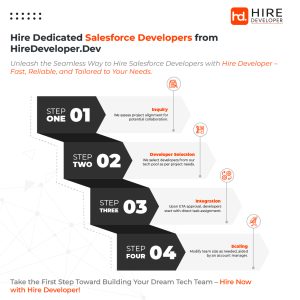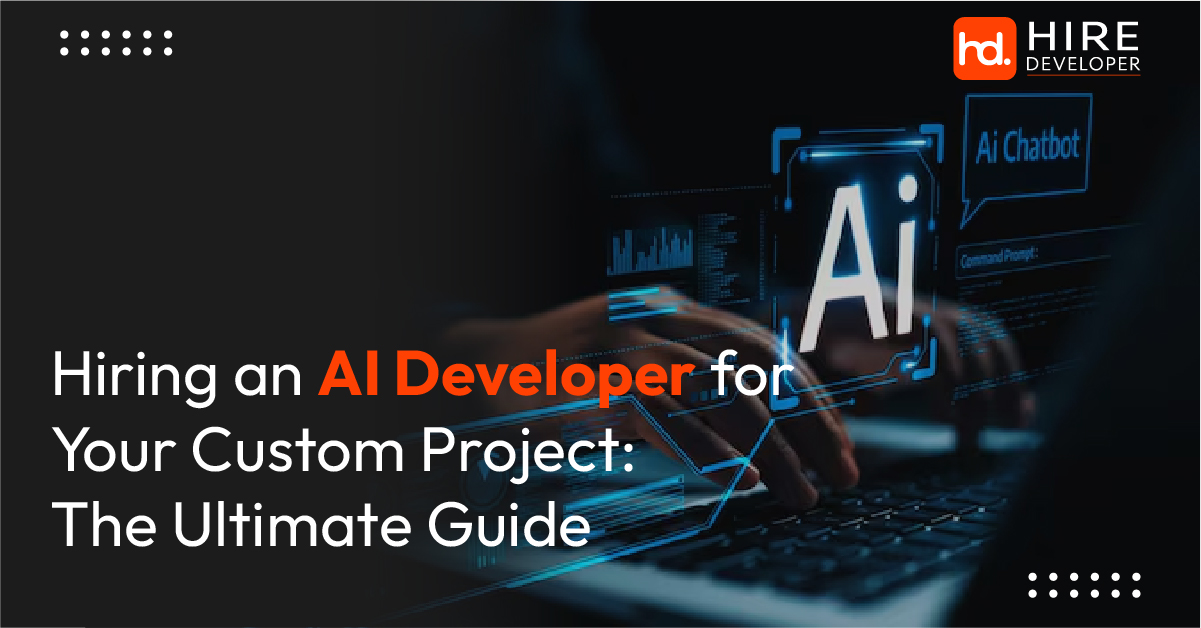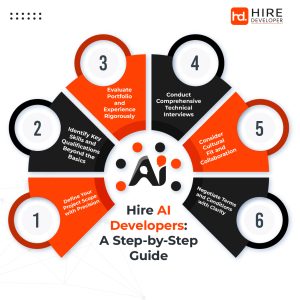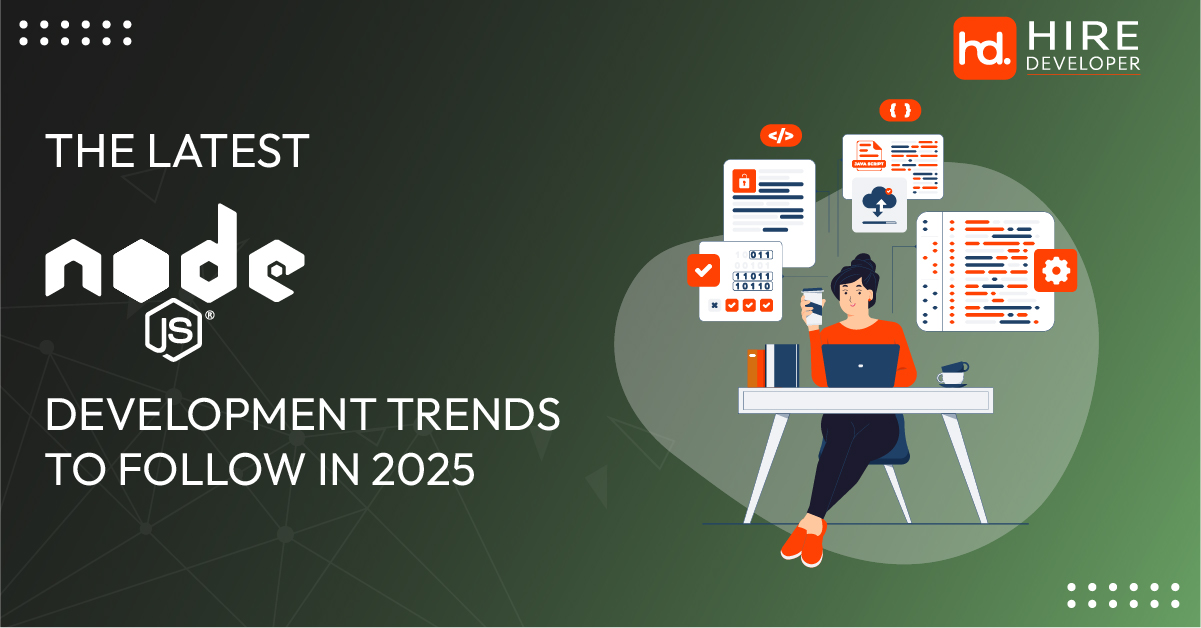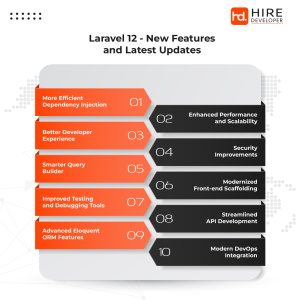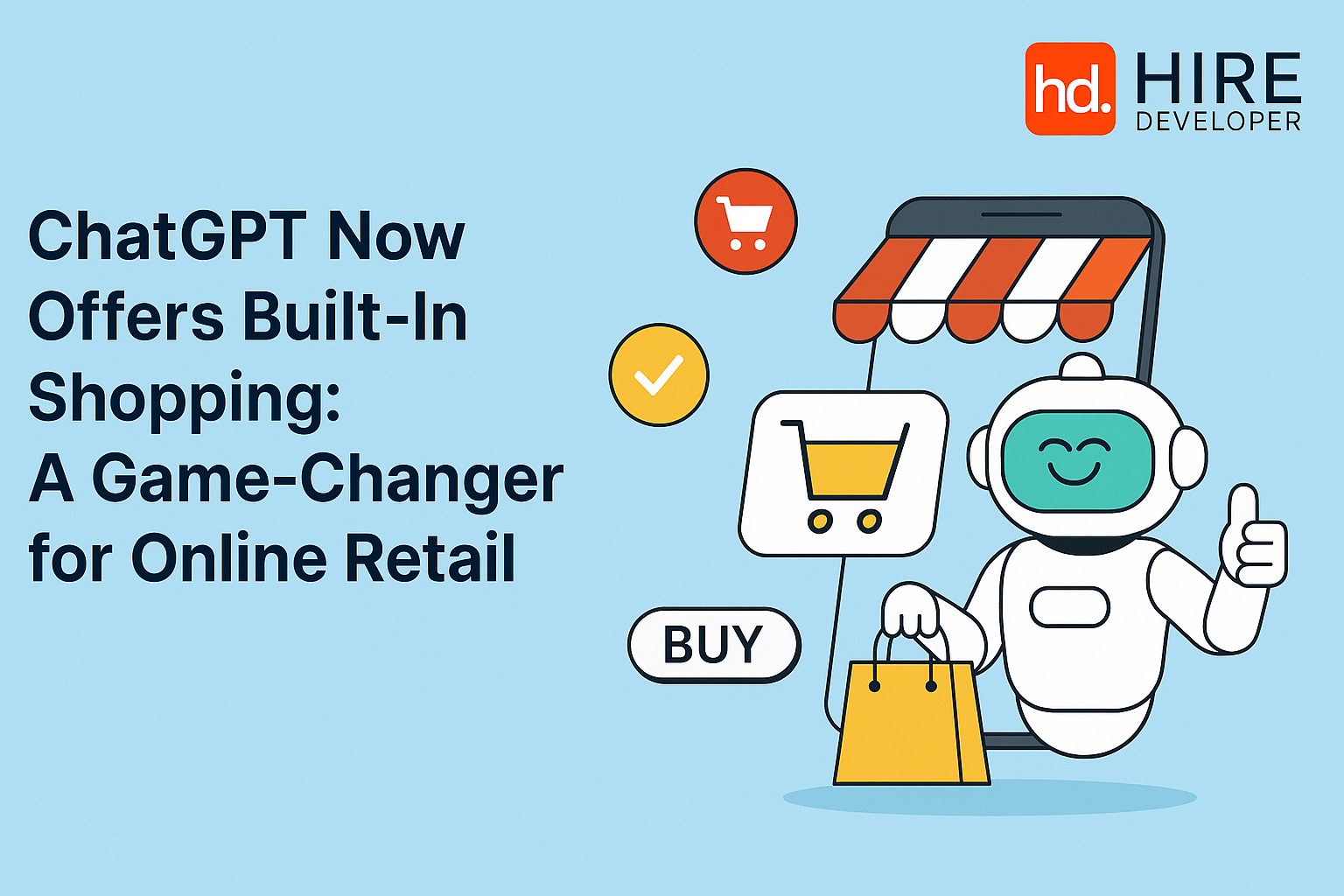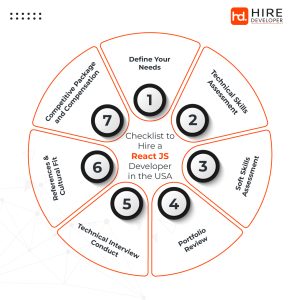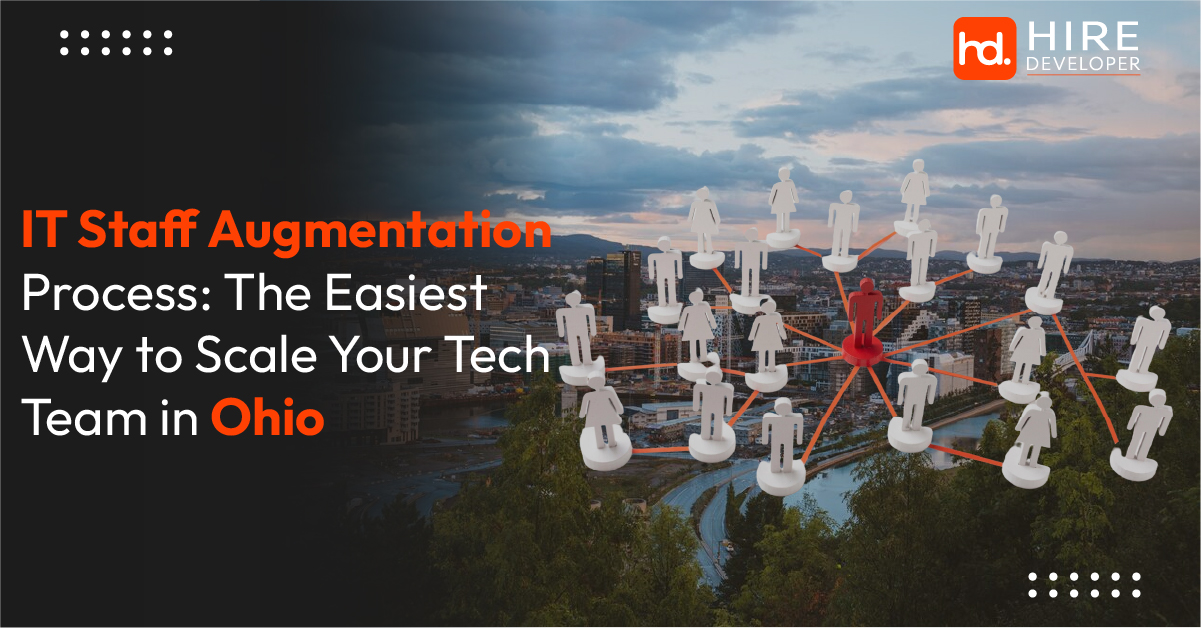In recent years, Node.js has emerged as the go-to platform for building robust web applications. As a prominent server-side programming environment, Node.js offers a wide array of tools and features that empower developers to create dynamic and scalable solutions. This growing popularity has led to intense competition in the development landscape.
So, how can you stand out in the ever-evolving world of Node.js? The answer is clear: stay ahead by following the latest Node.js development trends. Embracing these trends enables developers and businesses to remain competitive and innovative in the fast-paced world of web application development.
In this blog, we’ll explore the current and future Node.js development trends and highlight how these trends are revolutionizing the web development ecosystem.
Why Keep Up with Node.js Development Trends?
According to a Stack Overflow survey, Node.js is the most widely used web technology among professional developers, with approximately 47% of them using it for web applications. This data highlights the significance of Node.js in the development community and underscores why staying updated with its latest trends is essential.
Here are some compelling reasons to follow Node.js development trends in 2025:
- Stay ahead of the competition.
- Enhance user experience.
- Increase productivity.
- Prepare for future-ready applications.
Latest Node.js Development Trends to Watch for in 2025
It’s time to stay ahead of the competition by following the latest Node.js trends in 2025. Let’s take a look at the best one:
1. Increased Use of Microservices Architecture
Microservices architecture has rapidly gained traction in modern software development and for good reason. This approach focuses on creating small, independent services that collaborate to form a robust, scalable application. Thanks to its benefits, easy updates, scalability, and resilience, it’s become a go-to strategy for agile teams.
In the Node.js ecosystem, microservices architecture empowers developers by breaking down large applications into manageable components. Its flexibility makes it ideal for adapting to dynamic business needs, and if one service fails, it doesn’t take down the whole system.
2. Growth of DevOps Practices in Node.js Development
DevOps, a blend of “development” and “operations” continues to revolutionize how software is built and delivered. It emphasizes collaboration, automation, and continuous feedback to ensure rapid, error-free releases.
Node.js aligns perfectly with DevOps practices. From automated testing to continuous integration/continuous delivery (CI/CD) and infrastructure as code (IaC), Node.js developers are increasingly incorporating DevOps into their workflows. This not only speeds up the development lifecycle but also ensures consistency and reliability in every deployment.
3. From JavaScript to TypeScript: What You Need to Know
TypeScript is no longer just an optional enhancement; it’s becoming a cornerstone of modern Node.js development. As a statically typed superset of JavaScript, it supports object-oriented programming and introduces type safety, making code more robust and maintainable.
Many Node.js developers are making the switch to TypeScript for its ability to manage complex applications with ease. It reduces bugs, improves code readability, and facilitates long-term scalability essential qualities in today’s fast-paced dev environment.
4. Improving Progressive Web Applications (PWAs) Using Node.js
Progressive Web Applications (PWAs) combine the best of web and mobile apps to deliver seamless, cross-platform user experiences. They’re designed to work offline, load quickly, and feel like native apps without the need for app store downloads.
Node.js plays a pivotal role in enhancing PWAs. Its non-blocking, event-driven architecture is well-suited for handling real-time data and building responsive, performant applications. When paired with PWA frameworks, Node.js helps developers deliver fast, reliable, and engaging digital experiences across all devices.
5. Integration of Node.js With Blockchain Technology
Blockchain continues to reshape digital transactions and data security, and Node.js is right at the heart of this evolution. Its lightweight nature and asynchronous architecture make it a strong candidate for blockchain-based applications.
By integrating Node.js with blockchain technology, developers can build decentralized applications (dApps) that are fast, secure, and scalable. It supports innovations like smart contracts and immutable ledgers, helping developers deliver trusted solutions in finance, supply chain, and more.
6. Buzz Around Serverless Architecture and Node.js
Serverless architecture is a game-changer for developers who want to focus on code, not infrastructure. With this model, cloud providers manage the servers, allowing developers to deploy applications quickly and cost-effectively.
Node.js shines in the serverless space due to its event-driven design and lightweight footprint. Serverless Node.js applications can scale automatically with user demand, and you only pay for the computing time you use; there is no need to maintain or provision servers. As businesses demand faster development cycles, serverless Node.js continues to lead the way.
7. Performance Boost with Node.js 20
No discussion of Node.js trends would be complete without highlighting the latest release, Node.js 20. This version brings notable performance enhancements that make applications run faster and more efficiently.
One key update is the new HTTP parser, which improves request handling and supports asynchronous iteration. Additionally, the upgraded JavaScript engine offers significant runtime performance gains, making it easier to build high-speed applications at scale. For teams looking to future-proof their tech stack, upgrading to Node.js 20 is a smart move.
Future Node.js Development Trends to Look Forward
The trends in Node.js are not just about today’s benefits; they hold tremendous potential for shaping the future of programming. Below are some emerging Node.js development trends poised to transform the tech landscape.
1. Integration of Node.js with AI and ML Technologies
Artificial Intelligence (AI) and Machine Learning (ML) continue to revolutionize various industries. As these technologies evolve, integrating Node.js with them is paving the way for groundbreaking applications.
By utilizing popular ML libraries such as Keras and TensorFlow, developers can build predictive models and innovative systems. Node.js integration with AI and ML enables the creation of intelligent solutions like virtual assistants and chatbots.
As the need for AI and ML powered applications grows, Node.js is expected to see broader adoption across industries driven by its efficiency and scalability.
2. Increasing Demand for Real-time Applications
With the rise of interactive platforms such as chat apps and multiplayer games, real-time applications are in high demand. Users increasingly expect engaging and seamless experiences.
Node.js is an ideal choice for building real-time applications due to its event-driven architecture and support for WebSockets.
It offers a robust ecosystem, strong security features, and performance optimization capabilities. Real-time communication between clients and servers becomes smooth and efficient with Node.js. It reduces latency and ensures scalability, making development not only easier but also more reliable.
3. Wider Adoption of GraphQL for Building APIs
GraphQL, a query language for APIs, empowers users to request only the data they need. Its efficiency and flexibility have led to rapid adoption, and its use is expected to continue expanding.
Node.js supports multiple GraphQL implementations, including Express-GraphQL and Apollo Server. One of GraphQL’s primary benefits is minimizing unnecessary data transfer, which enhances performance.
As GraphQL evolves, so too will the tools and libraries used with Node.js, allowing for more dynamic and efficient API development.
4. Greater Use of Event-Driven Architecture and Reactive Programming
Event-driven architecture and reactive programming are becoming fundamental to developing resilient and dynamic applications. Node.js is well-suited for both approaches.
Event-driven systems respond to events like system notifications or user input. Node.js’s non-blocking I/O model and event loop make it a natural fit for this style of architecture.
Meanwhile, reactive programming is a more declarative style of handling events that complements event-driven architecture by simplifying event management and data flow. Node.js enhances these paradigms, enabling developers to streamline processes and handle real-time data efficiently.
5. Expansion of Node.js Use Cases in IoT and Edge Computing
Node.js is gaining traction in the realms of Internet of Things (IoT) and edge computing thanks to its lightweight runtime and powerful capabilities.
In IoT, Node.js collects and streamlines data from devices before sending it to a central server for analysis. With edge computing, it supports sensor-based devices by enabling real-time processing at the edge of the network.
This fusion makes Node.js an ideal choice for building applications that are fast, secure, and reliable. As IoT and edge computing technologies evolve, Node.js is expected to play a larger role due to its flexibility and performance.
In the years ahead, Node.js will continue to rise as a preferred runtime for smart, connected systems.
What are the Benefits and Challenges of Following Node.js Development Trends?
Before adopting the latest Node.js trends, it’s essential to understand both the benefits and the challenges they present.
Benefits of Following Node.js Development Trends
- Embracing new technologies in Node.js can enhance and accelerate the development process.
- Leveraging modern tools enables you to build innovative and cutting-edge applications.
- Staying up-to-date with Node.js trends allows you to align with its growing popularity and gain support from a larger developer community.
- Keeping pace with trends makes you more competitive in the job market, where many organizations seek developers with relevant, hands-on experience.
- It strengthens your skills and expands your knowledge, helping you become more proficient and confident in Node.js development.
Challenges While Following Node.js Development Trends
- Staying current with Node.js development trends can be time-consuming, as it often requires learning new tools, techniques, and frameworks.
- Adopting modern technologies can strain your budget due to the costs of implementation and the effort needed to master them.
- Relying on trending third-party libraries and tools may introduce vulnerabilities and pose security risks.
- Predicting the potential outcomes and scalability of new trends in Node.js can be difficult during early implementation.
- External influences, such as changing user behaviors or shifts in broader technology landscapes, can disrupt or diminish the effectiveness of emerging trends.
Top Companies Using Node.js Trends to Power Innovation and Scalability
Let’s explore how some of the world’s most well-known companies have successfully implemented modern development trends into their applications:
- Netflix: As a leading streaming platform, Netflix leverages event-driven architecture and uses Node.js to deliver high performance at scale. It also adopts reactive programming to manage data streams efficiently, resulting in enhanced application responsiveness and user experience.
- Trello: This popular project management tool integrates Node.js to enable real-time collaboration features for its users. This implementation allows team members to work together seamlessly and view live updates, streamlining project workflows and boosting productivity.
- Coca-Cola: The global beverage brand utilizes Node.js alongside AWS Lambda to build scalable, serverless applications. This approach allows Coca-Cola to automatically adjust resources based on demand, improving performance while simultaneously reducing operational costs.
- Twitter: Twitter(X) has adopted Node.js in the development of its Progressive Web Applications (PWAs), creating a browser experience that closely resembles native mobile apps. This shift has significantly improved mobile engagement and provided users with faster, more reliable access to the platform.
- Walmart: One of the largest retail corporations, Walmart relies on Node.js to power its microservices architecture. This has helped improve the speed, scalability, and reliability of its platform, allowing for the introduction of new features and a better overall shopping experience for customers.
- Airbnb: Airbnb integrates Node.js with GraphQL to develop dynamic and scalable platform APIs. This combination has enhanced the company’s ability to deliver faster, more flexible application responses, making the user interface more intuitive and accessible for travellers and hosts alike.
Unlock the Power of Node.js for Scalable and High-Performance Applications
In today’s digital era, businesses need applications that are fast, scalable, and future-ready. Node.js has emerged as one of the most powerful technologies for building high-performance applications that can handle complex tasks with speed and efficiency.
Whether you’re planning to develop a new application or facing technical challenges with your existing infrastructure, it’s crucial to partner with professionals who bring real-world experience, technical expertise, and proven success. That’s where HireDeveloper.Dev comes in.
Why Choose Node.js for Your Business Applications?
Node.js offers several key benefits:
- High Performance: Built on Chrome’s V8 engine, Node.js executes code quickly.
- Scalability: Ideal for microservices and real-time applications.
- Cross-Platform: Develop for desktop, mobile, and server-side with ease.
- Community Support: Backed by a strong developer community and regular updates.
When you hire skilled Node.js developers, you’re investing in speed, reliability, and scalable architecture, all essential for today’s competitive digital landscape.
Work With Trusted Node.js Experts at HireDeveloper.Dev
At HireDeveloper.dev, we combine years of hands-on experience with a commitment to delivering tailored solutions. Our developers bring deep domain expertise in building custom applications using Node.js, always aligning with your business goals and timelines.
Here’s what sets us apart:
- Agile Development Approach: Fast iterations, transparency, and flexibility.
- Custom Hiring Models: Choose full-time, part-time, or hourly engagement.
- End-to-End Support: From ideation to deployment and maintenance.
- Global Talent Access: Hire Node.js developers in Chicago, Palo Alto, San Francisco, San Jose, Santa Clara, and from anywhere across the USA and worldwide.
Build With Confidence and Trust
Your project deserves more than just code it deserves developers who are invested in your success. At HireDeveloper.dev, we prioritize:
- Experience: Seasoned developers with real project success stories.
- Expertise: Mastery over the Node.js ecosystem, libraries, and tools.
- Authoritativeness: Trusted by startups and enterprises globally.
- Trustworthiness: Transparent communication, security-first practices, and guaranteed results.
Ready to Get Started?
Let’s build something powerful together. Whether you’re launching a new platform or optimizing an existing system, our Node.js developers are ready to bring your vision to life. Contact HireDeveloper.dev today to discuss your project and hire dedicated and remote Node.js developers tailored to your business needs.
Related Resources:
